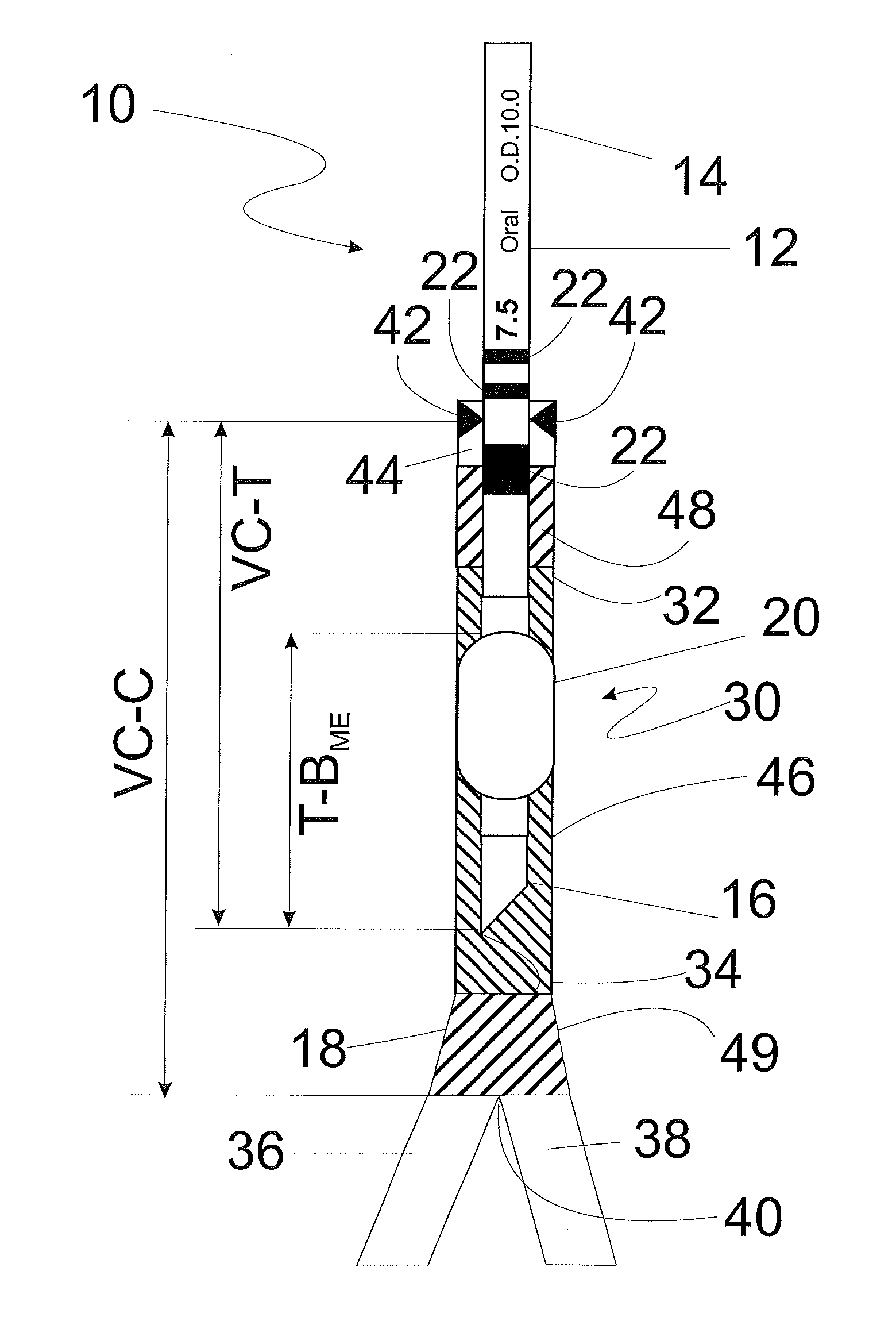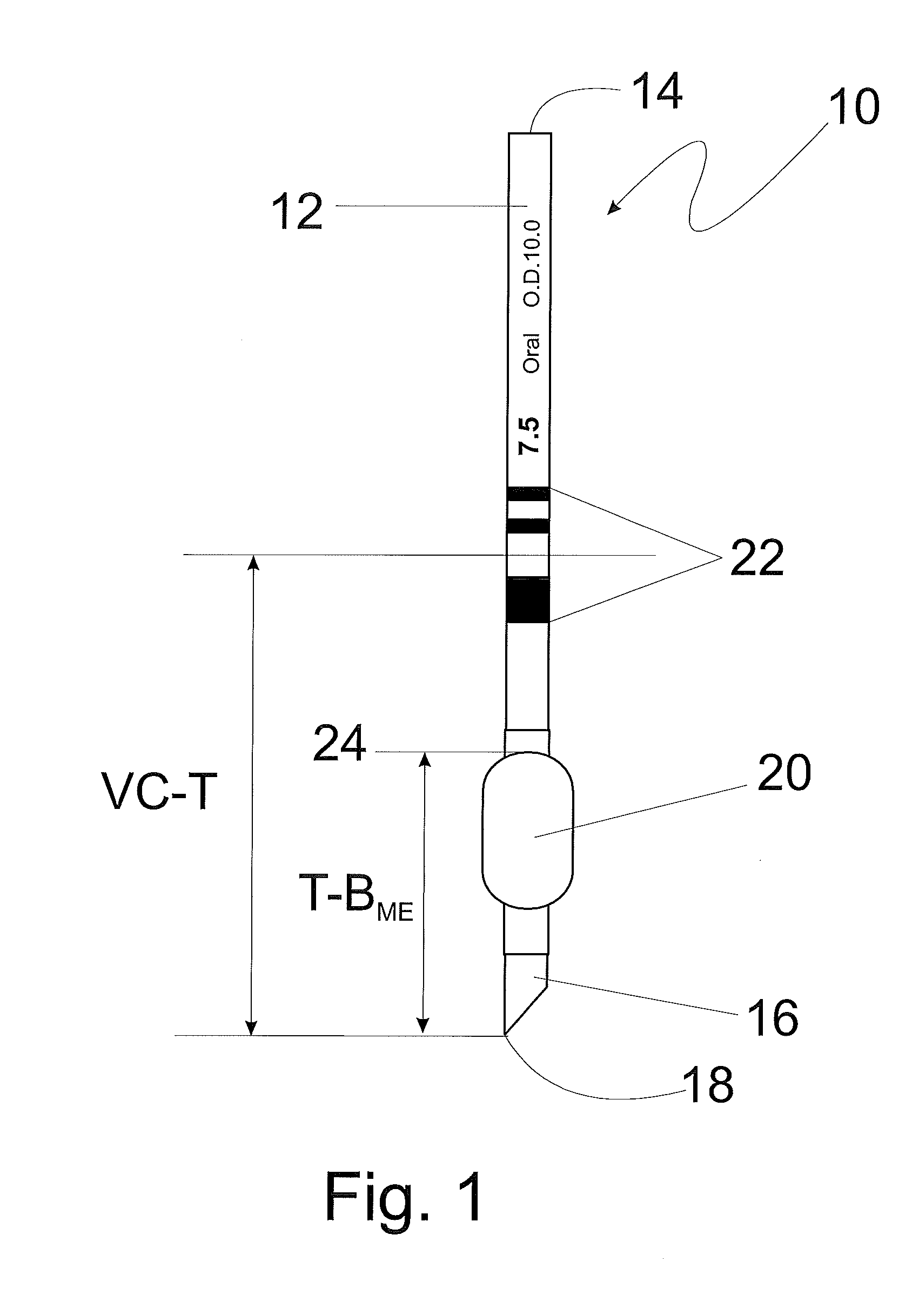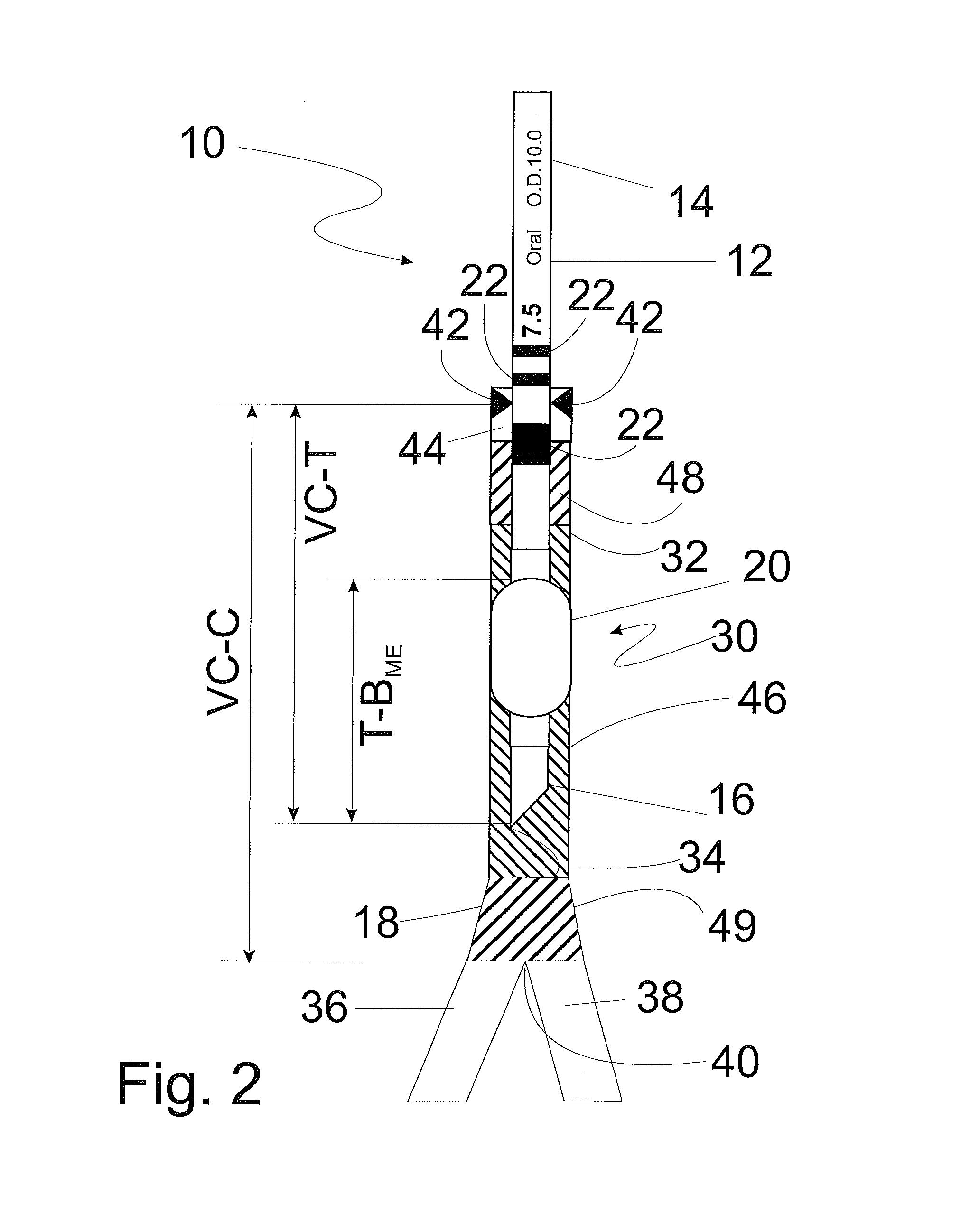Method and apparatus for determining optimal endotracheal tube size
a technology of endotracheal tubes and trachea, which is applied in the field of endotracheal tubes, can solve the problems of increasing the risk of vocal cord injury and paralysis, increasing the risk of unplanned extubation, and increasing the risk of endobronchial mal-positioning and associated complications, and achieves the effect of facilitating insertion
- Summary
- Abstract
- Description
- Claims
- Application Information
AI Technical Summary
Benefits of technology
Problems solved by technology
Method used
Image
Examples
Embodiment Construction
[0054]Selected embodiments of the present invention will now be explained with reference to the drawings. It will be apparent to those skilled in the art from this disclosure that the following descriptions of the embodiments of the present invention are provided for illustration only and not for the purpose of limiting the invention as defined by the appended claims and their equivalents.
[0055]Referring now to FIG. 1, an endotracheal tube (ETT) of typical construction is shown at 10. The ETT includes a tubular body 12 having a proximal or machine end 14 and a distal or patient end 16. The distal end 16 includes a beveled tip 18 defined by the most distal part of the bevel to facilitate insertion into a patient's trachea (not shown). The ETT also includes an inflatable endotracheal tube cuff or balloon 20 to provide a seal between the ETT and the trachea after the tube is placed in the trachea, as is known in the art. The cuff or balloon may be adjustably inflated to a preselected p...
PUM
 Login to View More
Login to View More Abstract
Description
Claims
Application Information
 Login to View More
Login to View More - R&D
- Intellectual Property
- Life Sciences
- Materials
- Tech Scout
- Unparalleled Data Quality
- Higher Quality Content
- 60% Fewer Hallucinations
Browse by: Latest US Patents, China's latest patents, Technical Efficacy Thesaurus, Application Domain, Technology Topic, Popular Technical Reports.
© 2025 PatSnap. All rights reserved.Legal|Privacy policy|Modern Slavery Act Transparency Statement|Sitemap|About US| Contact US: help@patsnap.com



